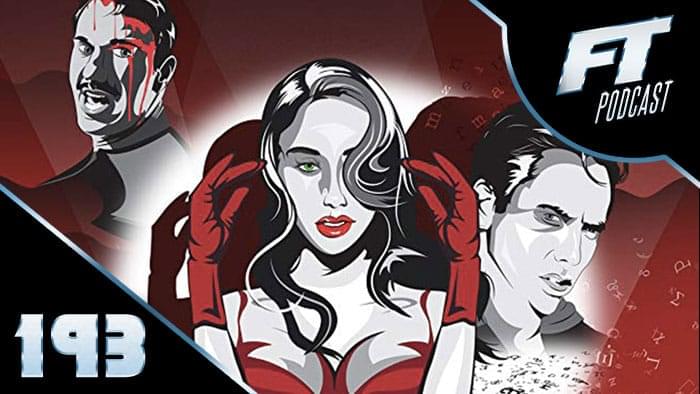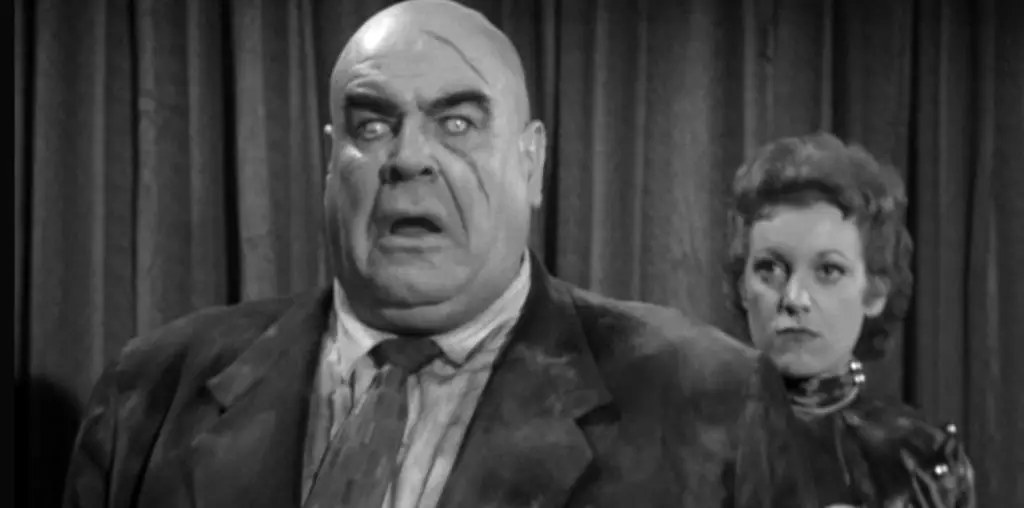
The plight of illegal Mexican immigrants in the United States is not a new subject for films, but the documentary Mojados: Through the Night is unique in that Texas filmmaker Tommy Davis actually joined a quartet of Mexicans in their dangerous journey across the Rio Grande and the Texas desert. Davis, making his first feature-length film, found himself climbing barbed wire fences, sleeping outdoors in thunderstorms, hiding from the U.S. Border Patrol and traveling endless stretches of open land with barely enough food or water. In short, he lived the life of an illegal alien.
The compelling and dramatic “Mojados: Through the Night” has its New York theatrical premiere on May 18. Film Threat caught up with Davis as he was preparing to take his film to the Big Apple.
There have been many films and TV specials following the migration of illegal aliens up from Mexico into the US. Why did you decide to pursue a subject that has been covered frequently? ^ Style and content. I had been told a bit about a major network news crew that had tried this very thing the summer before I had enough cash to go – but they ended up ending it early when they got tired and called in their support team to pick them up. There was another film that traced South Americans all their way up to the Rio Grande – which is a whole other story – the treatment of migrants through Mexico is extreme and as unjust as their treatment in the U.S. These other films did not matter to me. From what I have seen, excluding the South American documentary, everything else was a news piece polished for a traditional audience. I wanted to go and make a documentary that I would enjoy – I tried to throw it back to the early work of the Maysles and Pennebaker, but as I cut the film I realized I needed to add in narration – but even that I tried to do in a different form.
This journey is not planned and it’s not thought out, so I decided early on to ditch the glide cam set up, forget about white balancing and we’ll just see what the shotgun mic can pick up. The flow of the camera work and coverage had to match that of the journey.
The film’s press notes alluded to your working odd jobs to finance the film. What exactly did you do to finance the film? And how much did the production cost? ^ I ended up working on political campaigns because it was “seasonal” work and I could disappear for a while down into Mexico and be back in time for a new campaign. That’s what I did during the shooting, to edit, well I had to teach myself, so I moved to Athens, GA – found an apartment for $225 a month and I worked odd jobs around Athens and then I’d stay up all night editing. I didn’t know anyone there so it was just me in a room with a sleeping bag and a computer trying to learn how to edit. In real dollars I haven’t figured out how much “Mojados” cost – I did have to get an Apple loan to get the computer and it took me about a year to save the money for a camera – but then came the fests when I realized you needed postcards, tons of dubs and all sorts of formats, so it’s been expensive.
It is obvious that the men you followed would’ve been arrested and deported if the U.S. Border Patrol caught them. But what would’ve happened to you if the Border Patrol came upon the crossing party when you were filming them? ^ Well I had met with the head of the U.S.B.P. Tucson’s sector and he knew what I was up to and he wished me luck. He told me I’d likely be arrested if caught and they would do a small investigation to be sure I was not smuggling the people – eventually, I would be released and fined for not crossing at a point of entry – but it was a double standard on the journey because everyone was constantly worried about getting caught and I knew that the worst for me was a fine and for them, they would have to endure all of this again.
The film has played extensively on the festival circuit. How did you go about choosing your festival strategy? ^ No strategy – pretty much trial by fire. I submitted a 90 minute cut, sans narration to Sundance – SXSW called in November and asked if I would premiere there, my first thought was “…this is cool so don’t be straight forward and tell them you haven’t decided…”, so I said no I can’t do that until I hear back from Sundance. Well, I don’t think that was the way to play the game, so SXSW called me after the Sundance lineup was announced and asked if I’d play and I said yes, but then I was only screened after the opening weekend and given two slots instead of the typical three – so I think I should have agreed to premiere at their first offer. Following SXSW it was mainly invites, I couldn’t always afford the entry fees so I wouldn’t apply – for international, well I just didn’t even apply because it was too expensive.
How were you able to use the festival circuit to raise awareness in your film? And did you connect with potential distributors at the festivals? ^ At SXSW I was approached by a couple distributors for theatrical and DVD, but I was leery about their interest and at the end of the day they weren’t serious. The main offers for TV distribution and DVD have come from random DVD’s that are circulating…I’d just get a call and we proceed from there. I remember hearing the advice, don’t let your movie leak out, but for me that was the only way to get it seen: I’d give a copy to anyone and in a way it’s paid off.
Your film is opening in New York, albeit without having a theatrical distributor. What happened in your attempts to get theatrical release for the film? And will you be self-distributing it in other cities? ^ No, to be honest, when the Pioneer called I was surprised, but I knew it was justified given the word of mouth in NY. When I was offered the New York screening I was thrilled so my friends and other people in NY can see the movie, but it’s a lot of work. If a theater calls I’ll send it to them and I’ve set up enough stuff that I can just mail them a package but I don’t have the time to seek out theaters. I guess we’ll just see, after the Pioneer put it up on their site, I got a call from Minneapolis and it will play there after NY and possibly Austin – I also realize it’ll be out on DVD the last week of July so the window for a theatrical release is quickly closing. It’s really great to put it out there for a week – but I’d like to spend time on my next film.
What became of the four men you documented in the film? ^ That’s what everyone wants to know. Well in that final scene the owner of the safehouse told me I had to leave and that he would be taking them up to Austin so that’s when I exited the doc. And everything else is pieced together. I know Tigre and Oso continue to go back between Michoacan and the US, but the whereabouts of Guapo and Viejo are unknown. Oso has told me that a lot of migrants have seen it and it’s kind of like this cult film in the migrant communities and in parts of Mexico. But they want to be left alone though, when they’re here they’d like to just blend in. Though we joked during the walk that in 20 years we’ll do a follow up and someone in Arizona suggested the title, “Mojados 2: F**k It We’re Staying”.
What’s your next project? ^ On the doc side, it’s “Genes and Janes” a kind of a cross between the style of Errol Morris and Carlos Marcovich with my own spin. If the funds all come through it’s going to be a 90 minute romp of a feature that examines the discovery of DNA via the work of Dr. James Watson, but the story will focus on the other things going on for a 24 year old genius i.e. – girls, beer, parties and a little bit of science when there’s time. It’s a different version of the scientific process – you have a kid in a race with other top scientists around the world, yet he gets that life is meant to be fun so at times when he and his partners would be on the verge of a great breakthrough they’d leave the lab in favor of girl watching at a pub.
The other project is a script – “This is How it Happened” that is a cross between “Stand by Me” and “Mojados.” It’s a violent coming of age road movie as two friends leave their homes in Mexico and try to make it to the border – it’s essentially everything I saw in the two years it took me to make Mojados – as seen through the eyes of two boys.


